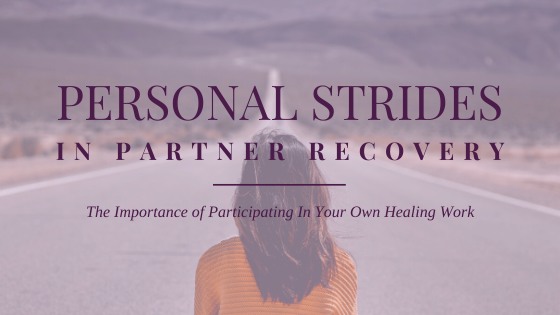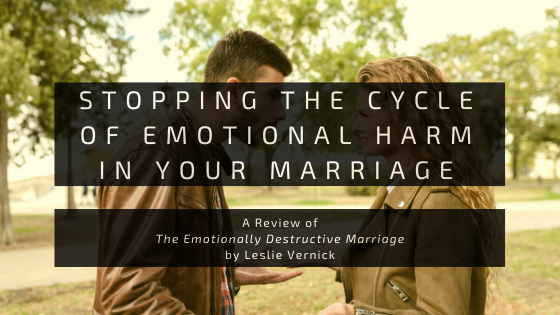After the discovery of sex and love addiction in a relationship, the addicted partner often initially responds with promises to change their behavior. This comes as a direct result of seeing the impact of the discovery on their betrayed partner: anger, grief, hurt and fear.
However, as time goes on, these promises can ring hollow. They came out of the addict having to face the consequences of their behavior in a crisis moment. For the couple recovering from addiction, you might find that over time, the addict’s promises begin to fade and lose their urgency or importance. For the partner that is rebuilding trust, this feels like a second wave of betrayal.
Betrayed partners can respond in a few different ways to this discovery of addiction. Some partners make threats to leave or divorce their spouse in the heat of the moment, disgusted and shocked by the betrayal. Some avoid reminders of the addict’s behavior, coping by hiding from the painful emotions that arise when facing the addiction. Others become hypervigilant, seeking information about their partner’s addiction in ways that border on obsessive. Some partners become suspicious of the addict’s whereabouts and activities, trying to control their behaviors with demands.
Across the board, though, most betrayed partners are faced with uncertainty about how to move forward in their relationship or marriage. They want to see changes in their addicted partner, and they want that change to be genuine and lasting, but they aren’t sure they can trust their partner’s words or actions.
This is where the language of offers and requests can come in handy when beginning to talk about rebuilding trust in the relationship.
Offers
“Offers” are commitments to change specific behaviors done by the addicted partner and/or the betrayed partner as a way of rebuilding trust and honoring the relationship. While offers may be informed by your partner or spouse’s desires, they are a way for each partner in the couple to take personal responsibility for their own actions.
Examples of offers include:
I will attend individual and group therapy on a weekly basis specific to my sex and love addiction recovery.
I will build accountability and support relationships through my 12 Step group, therapy group, or other supportive relationships.
I will regularly identify and communicate my emotions to you in a way that is consistent with our work in couples therapy.
Guidelines for Offers
Ask for help.
If you’re having a hard time coming up with ideas on what to offer, ask your partner what he or she needs from you in the trust-rebuilding process. You can also ask a therapist, sponsor, or supportive recovery friend, but the person who has the best sense of what they truly need is your partner.
Take responsibility.
Look internally at your own role in creating problems in your relationship. What are some of the ways you have failed to take responsibility for your own actions? What would taking responsibility for them look like now? Be willing to acknowledge your own wrongdoing and reasons trust might be broken in the relationship due to your actions or choices.
Make them specific.
The more specific the offer, the more easily your partner can see that you are carrying it out, and the less likely they are to be disappointed. Instead of saying, “I’ll go to therapy,” specify, “I’ll go to weekly individual therapy sessions with a therapist specializing in sex and love addiction treatment.”
Set a deadline.
If there are tasks that need to be completed in the trust-rebuilding process, set a certain date by which you plan to have those tasks done. For example, if you offer to find a sponsor in your 12 Step fellowship, indicate a date by which you plan to have that sponsor (“I’ll ask someone to be my sponsor by the end of this month.”)
What NOT to Offer
Instead of specific statements of intention, addicted partners often make more global, sweeping claims like, “I’ll do anything you want me to do,” or “I’ll do whatever it takes to save our relationship/marriage.” A broad statement like this can be interpreted in many different ways, and often the variance in interpretation creates expectations and disappointment when there isn’t follow-through on those promises. These statements are also often untrue: once the initial shock of discovery wears off, you may find that you aren’t willing to do everything your partner requests and would like to have room to negotiate or create compromise.
Also, avoid using these offers as a bargaining chip, saying, “I’ll offer this if you’ll offer that.” Offers are not meant to be a tool to manipulate or force the hand of your partner. This sets up a distorted power dynamic that can lead to bitterness and resentment. Any offer you make needs to be one that you are willing to carry out regardless of your partner’s response.
Requests
“Requests” are desires or wants for the recovery process that the betrayed partner and/or the addicted partner communicate to one another. They differ from demands because there is room for discussion, negotiation, or refusal of the requests. As partners can respond to requests in a variety of ways (yes, no, or negotiation), the partner who is making the request must be open to the possibility of receiving a response they don’t expect or that challenges their request.
An important note here: requests are different from non-negotiable boundaries. Non-negotiable boundaries are around behaviors that, if the addicted partner carried them out, would lead you to end the relationship. Vicki Tidwell Palmer specifies the difference between non-negotiable boundaries and requests in an article that may help to clarify the difference for yourself.
Examples of requests include:
I would like to request that we pursue couples therapy together. Are you willing to do so?
I would like to request that we have a weekly date night where we can begin to connect on topics unrelated to addiction recovery. Are you willing to plan those date nights?
I would like to request that we have an age-appropriate conversation with our children about our addiction recovery. Are you willing to have a conversation with me and our therapist planning that discussion?
Guidelines for Requests
Identify what helps you gain trust.
What would help you regain trust in the relationship? Are there any recovery-related behaviors to which you’d like to see your partner commit? Using a resource like Vicki Tidwell Palmer’s book Moving Beyond Betrayal can help you clarify your needs and identify what you want to request. Talk to your therapist or other support individuals, as they may provide other resources to help you discern what you’re wanting from your partner.
Prepare for “no” and negotiation.
When you make a request, it is important to remember that your spouse has the right to say “no” or to ask for a compromise. Prepare for how you might feel with each possible response. Decide for yourself how important these wants or needs are for you and identify alternative options you’re willing to discuss as well as self-care behaviors you may need to use if your partner is unwilling to carry out one of your requests.
Keep a written record of agreements.
When you have conversations in which you make requests, write down any agreement you come to, whether it is a “yes” to your request or a compromise the two of you have arrived at together. Having this written record will serve a few purposes. It will help you look back periodically to review your progress together as a couple. It can highlight changes that have happened to encourage trust. It can also bring you back into alignment if you’ve gotten off track from the agreements you’ve made.
Take caution: this record of agreements isn’t meant to be a weapon to wave in front of your partner’s face when they aren’t complying. If you do have a written list and things are out of alignment, approach a conversation about it with curiosity and patience rather than demands or anger. If you worry that you won’t be able to maintain that openness, consider having this discussion together with your couples therapist in a therapy session.
What NOT to Do
It is easy to slip away from the concept of requests into demands or ultimatums. Demands do not allow your partner to make a choice about their behavior. Ultimatums are often an attempt to control or manipulate your partner. Using demands and ultimatums sets up a distorted power dynamic in which you are like the parent and your partner is like a child. In order to be two adults on equal footing in a relationship, there needs to be balance in the power dynamic.
Refrain from making requests that are meant to punish or chastise your partner. Similar to demands or ultimatums, trying to punish your partner creates an unhealthy, imbalanced power dynamic. A good measure for making requests is identifying what your personal needs are and how your partner can support you in meeting those needs. You should never be in a position where you are responsible for your partner’s recovery or change: the only person you can be responsible for is yourself.
The Balance of Offers and Requests
Typically, the addicted partner will need to make more “offers” while the betrayed partner makes more “requests” early on in the recovery process. However, it is good practice to spend time with the reversal. Betrayed partners, look for offers you can make to work on your own healing or address your responsibility in conflicts or issues in the relationship. Addicted partners, consider requests you can make to help you support your partner more effectively and rebuild trust with greater ease.
Having an Offers and Requests Discussion
When you decide as a couple to present your offers and requests to your spouse for the first time, it is best to do in the context of a couples therapy session. Each partners should create lists of both requests and offers, regardless of if you are the addicted partner or the betrayed partner.
As you sit down and walk through your lists together, be open to compromise and willing to talk through potential alternatives so that you can come to an agreement. Resist the tendency to become defensive and instead try to have empathy for your partner’s perspective. Use the phrase “help me understand” when you’re having trouble empathizing, then repeat back what you heard to be sure you’re understanding correctly. Using conversation frameworks from John Gottman’s Seven Principles for Making Marriage Work, such as Dreams Within Conflict and the Art of Compromise, to aid you in this discussion.























